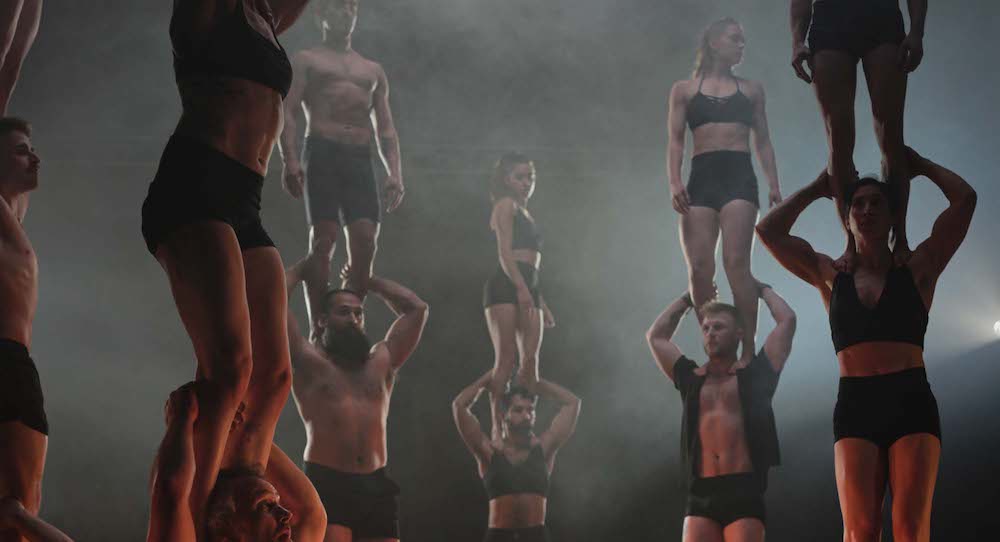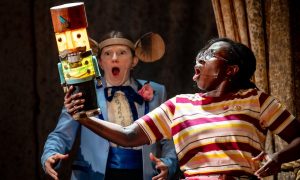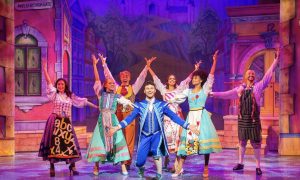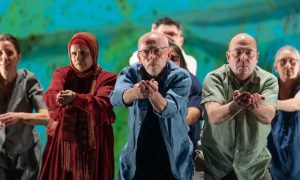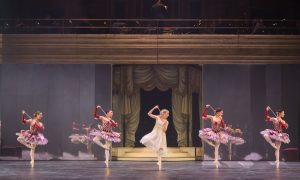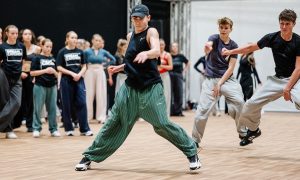Peacock Theatre, London.
3 September 2025.
With a tag line like ‘This is circus like you’ve never seen before: bold, breathtaking, and deeply moving,’ the bar is set pretty high when you go to watch Copenhagen Collective – The Genesis.
Only an hour in length, it’s safe to say the show certainly packs a punch. It delivers on its promise of leaving you on the edge of your seat and holding your breath as performers yearn for touch and connection, and are launched through the air, often to audience applause and the occasional audible gasp.
Following the company’s UK premiere at this year’s Edinburgh Fringe, the ensemble of performers made quick work of exploring every inch of the vast Peacock Theatre West End stage, moving like they had performed there before and not like it was their opening night.
Not only did the choreography use the stage on a horizontal level to its maximum, but every plane of movement and axis was examined and probed through synchronised movements, embracing motifs and gravity-defying circus moves.
Human connection is the lynch pin for this production. At times, set to a monologue, with segments often featuring languages from the global cast, the show explored themes such as “trust,” “breaking of ties,” and “separation” in a show that investigates the question of “Who we are?”
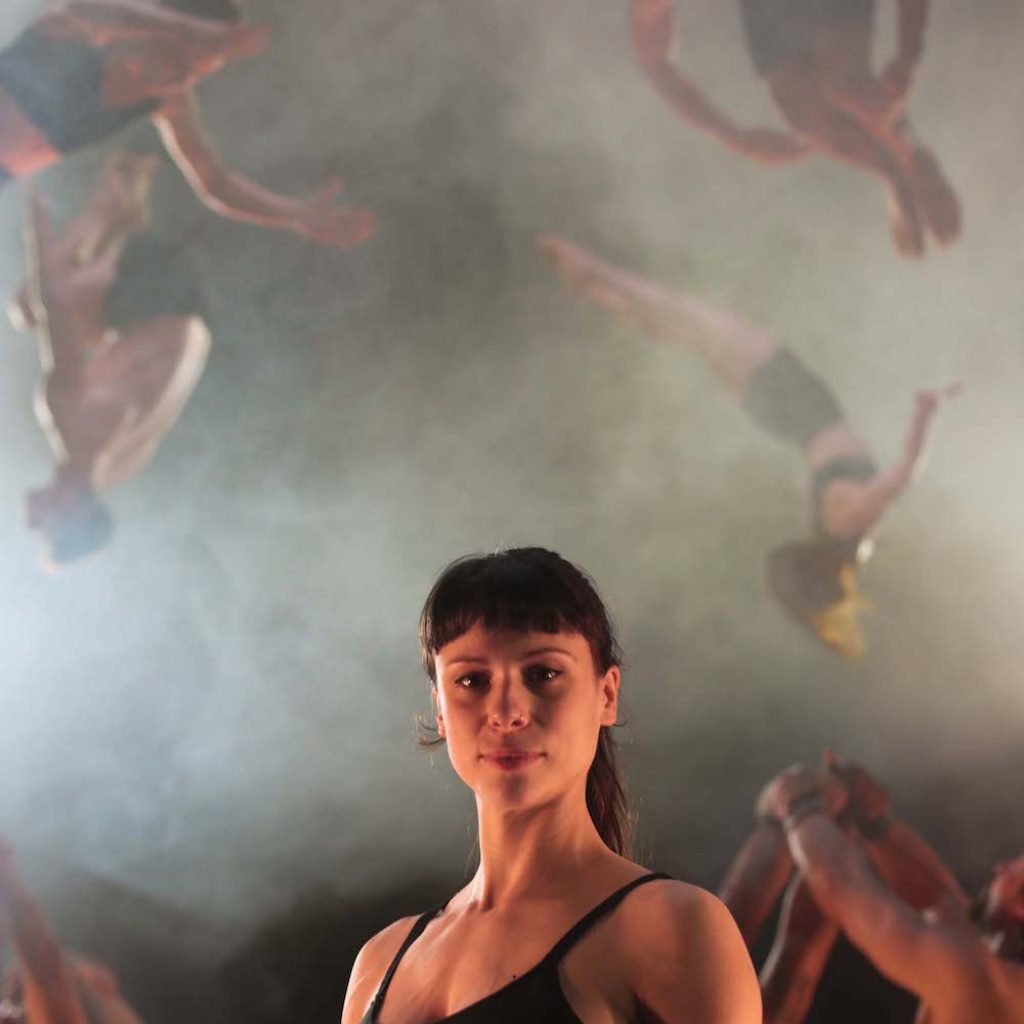
The narrative may be a simple one, which I would have liked to have seen explored more through movements not always of an acrobatic nature, to allow for character growth; however, the idea was clear, and with quirky humour sprinkled throughout, you can see that this cast has a good time on stage and utterly trusts one another.
While searching for adjectives to describe this ensemble-led show, all I could think of was ‘human Lego.’ From climbing one another to build three- and four-person high towers, to human skipping ropes and staircases, cast members slot and build together, and rarely show the same human configuration more than a handful of times.
It is almost as if a challenge was set to see how many ways two, three or even groups of performers could interact and intersect, with the results proving that the possibilities are limitless.
The development of touch was a theme well enjoyed by the audition as the cast used touch to perform gripping movements from small duo-carwheels and cradle lifts to the more elaborate cheerleader-style launches and catches, often from one performer’s shoulders, at times two stacked performers, to configurations of performers ready to receive the energy propelled at them. Also, if watched closely, touch was used on a more minimal and intimate level. Cast members would use quick reaffirming touches on one another to show that a lift was safe to proceed or to check that a performer was okay after a shaky moment. A small gesture would let the base support know that they had backing, or a hand would turn to a shelf as an artist climbed upon it. Touch showed safety, support and trust – all aspects earned from clearly relentless rehearsals.
The show was aided and moved on by the soundscape carefully curated by composer Leif Jordansson with at first the monotonous beats helping to set the scene and amp up the performers, with new musical sections, often following a moment of the cast dispersing and flying around the stage acting almost as a palate cleanser, to classical overtures setting a more chipper and mischievous mood to that of a club vibe towards the end.
Stefan Goldbaum Tarabini’s lighting illuminated the performers from every angle, allowing them nowhere to hide and perfectly lighting both the physical moves and their physics to show just how spectacular they were.
As they say, it is hard work making things look easy, and if that was the case, this cast worked incredibly hard. Defying gravity and pushing the boundaries and capabilities of the human body. It does make one think, ‘What must rehearsals have been like?’ when it appears almost nothing is the limit.
A mention must go to the team of choreographers and acrobatic coaches who help create this Olympic show. With direction and choreography by Patrick King and Johan King Silverhult, and re-staging, dramaturgy and choreography by Daniel Gulko. Assistant direction and choreography by Britta Oling and acrobatic coaches for the show are Søren Flor and Craig Dagostino.
Coming from a dance background myself and understanding the mechanics of rehearsing and bringing a show to life, I left the theatre wanting to see it for a second time so I could focus on a different pairing or choreographic moment. Each ensemble member brought something different to the show, from body contortion, hand balance and power lifts, to breaking the fourth wall to check in on the audience as Ronan Jenkinson did.
After London, European audiences can expect to be both entertained and mildly scared by the show as it tours to Barcelona, Spain and Düsseldorf, Germany.
By Jamie Body of Dance Informa.


